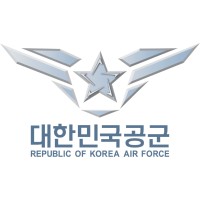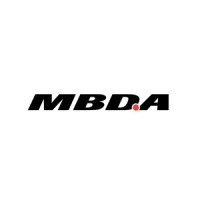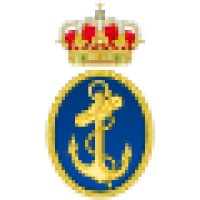Company Cyber Security Posture
NANA
NA Company Details
NA
NA
NA
NA
NA
NA
Scan still pending
NA
NA
Between 200 and 800
This score is AI-generated and less favored by cyber insurers, who prefer the TPRM score.
 NA Global Score
NA Global Score.png)

Company Scoring based on AI Models
| Model Name | Date | Description | Current Score Difference | Score |
|---|---|---|---|---|
| AVERAGE-Industry | 03-12-2025 | This score represents the average cybersecurity rating of companies already scanned within the same industry. It provides a benchmark to compare an individual company's security posture against its industry peers. | N/A | Between 200 and 800 |
Company Cyber Security News & History
| Entity | Type | Severity | Impact | Seen | Url ID | Details | View |
|---|
Company Subsidiaries

NA
Access Data Using Our API

Get company history
.png)
NA Cyber Security News
Cybersecurity the focus of DARPA Resilient Software program
This effort will serve as a template that can be used by others to help jumpstart their efforts to incorporate DARPA's resilient software tools into their ...
Anduril Working With Riverside Research To Strengthen Cybersecurity Of Lattice
DIU Seeks Funding for Active Response to Interference Against Commercial Satellite Operators · Satellite Developer Portal Space Opens First ...
GA-ASI and Shift5 Partner to Embed Observability Into MQ-9A Reaper
The Shift5 Platform reveals critical operational and cybersecurity insights that enable operators to move from data to decisions quickly and ...
Navy Conducts Flight Test With Lockheed, General Atomics
Discover how the Navy commanded unmanned aircraft through the Lockheed Martin-powered advanced control station.
The Second Cohort of the Critical Energy Cybersecurity Accelerator Program Continues System Visibility Evaluations
Following a successful first cohort, CECA convened a second round addressing the complexity of industrial control systems (ICS) and risks ...
CMMC 2.0 and the possibility of a cyber service: 2025 preview
The Pentagon released its final rule for the long-awaited Cybersecurity Maturity Model Certification (CMMC) 2.0, which sets new standards for contractors.
Top 10 Tech Companies to Work for in San Bernardino in 2024
Explore the top 10 tech companies to work for in San Bernardino in 2024. Discover their culture, opportunities, and benefits.
General Atomics Aeronautical Small Business Program
GA-ASI is committed to working with small businesses to deliver products and services of the highest quality.
General Atomics awarded USSF contract For Phase 1 of the Enterprise Space Terminal program
General Atomics Electromagnetic Systems (GA-EMS) has revealed that the U.S. Space Force's (USSF), Space Systems Command (SSC) has awarded the ...

NA Similar Companies

Naval Sea Systems Command (NAVSEA) Careers
We are NAVSEA. The Force Behind the Fleet. Join us and become part of a mission-driven team, at one of the best places to work in the federal government. This NAVSEA LinkedIn page is all about connecting with talented individuals ready to make a difference through a rewarding career with us. We shar

Saab
As a leading defence and security company, we offer solutions that range from the depths of the oceans to high in the sky, on land and in cyberspace, to keep people and society safe. Empowered by our 22,000 talented people, we constantly push the boundaries of technology to create a safer, more sus

Republic of Korea Air Force
The Republic of Korea Air Force (ROKAF; Korean: 대한민국 공군; Hanja: 大韓民國 空軍; Revised Romanization: Daehanminguk Gong-gun), also known as the ROK Air Force, is the aerial warfare service branch of South Korea, operating under the South Korean Ministry of National Defense. The ROKAF has about 450 combat

MBDA
A world leader in missiles and missile systems. Our multi-national organisation is made up of around 13,000 employees working across the UK, France, Italy, Germany, Spain and the US, and is the first truly integrated European defence company. As the European champion in our sector, our vision is

BAE Systems
At BAE Systems, we help our customers to stay a step ahead when protecting people and national security, critical infrastructure and vital information. We provide some of the world’s most advanced, technology-led defence, aerospace and security solutions and employ a skilled workforce of 107,000 peo

Spanish Navy
The Spanish Navy (Spanish: Armada Española) is the maritime branch of the Spanish Armed Forces and one of the oldest active naval forces in the world. The Armada is responsible for notable achievements in world history such as the discovery of Americas, the first world circumnavigation, and the disc

Frequently Asked Questions
Explore insights on cybersecurity incidents, risk posture, and Rankiteo's assessments.
NA CyberSecurity History Information
How many cyber incidents has NA faced?
Total Incidents: According to Rankiteo, NA has faced 0 incidents in the past.
What types of cybersecurity incidents have occurred at NA?
Incident Types: The types of cybersecurity incidents that have occurred include .
Additional Questions
What Do We Measure?
















Every week, Rankiteo analyzes billions of signals to give organizations a sharper, faster view of emerging risks. With deeper, more actionable intelligence at their fingertips, security teams can outpace threat actors, respond instantly to Zero-Day attacks, and dramatically shrink their risk exposure window.
These are some of the factors we use to calculate the overall score:
Identify exposed access points, detect misconfigured SSL certificates, and uncover vulnerabilities across the network infrastructure.
Gain visibility into the software components used within an organization to detect vulnerabilities, manage risk, and ensure supply chain security.
Monitor and manage all IT assets and their configurations to ensure accurate, real-time visibility across the company's technology environment.
Leverage real-time insights on active threats, malware campaigns, and emerging vulnerabilities to proactively defend against evolving cyberattacks.




